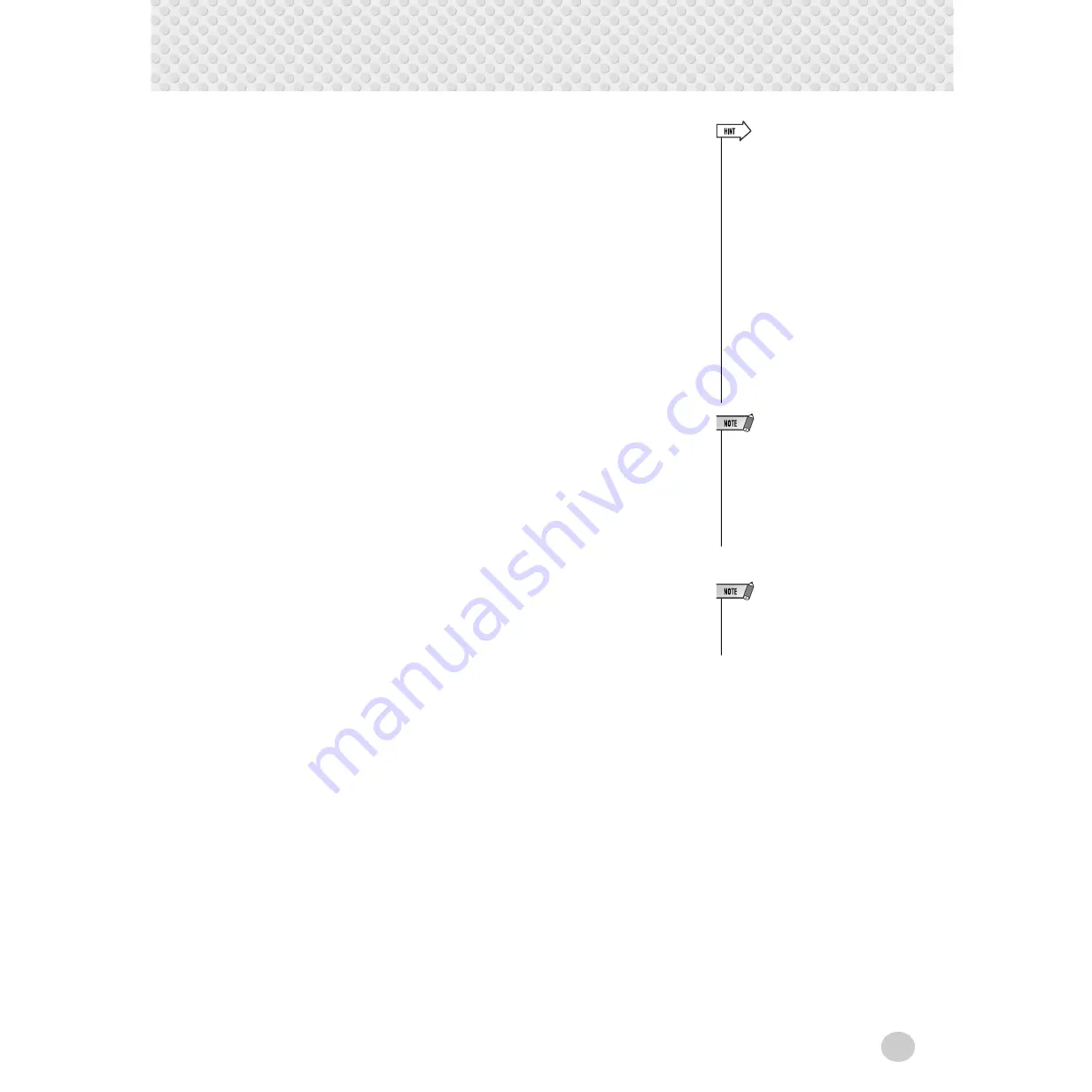
Auto Accompaniment
39
3
Change chords using the auto accompaniment feature.
Try playing a few successive chords with your left hand, and notice how the
bass and chord accompaniment change with each chord you play. (Refer to
page 43 for more information on how to use auto accompaniment.)
4
Stop the accompaniment.
You can do this in one of three ways:
■
Pressing the [START/STOP] button
The rhythm/accompaniment stops playing immediately.
■
Using an Ending section
Press the [INTRO/ENDING] button. The accompaniment stops after the
Ending section is finished.
■
Pressing the [SYNC START] button
This immediately stops the accompaniment and automatically enables Sync
Start, letting you re-start the accompaniment by simply playing a chord or
key in the auto accompaniment section of the keyboard.
• The [ACMP ON/OFF] button can
also be used to turn off and on
the bass/chord accompaniment
while playing — allowing you to
create dynamic rhythmic breaks
in your performance.
• You can use the Sync Stop func-
tion to create a similar, yet even
more dramatic break. With Sync
Stop on (page 40), you can con-
trol breaks in the rhythm and
accompaniment simply by releas-
ing your fingers from the keys.
As long as you play and hold a
chord, the accompaniment con-
tinues. When you release it, the
accompaniment stops. You can
also use this feature to create
exciting rhythmic stutter effects,
chord hits, and accents by play-
ing staccato chords.
• Chords played in the auto
accompaniment section of the
keyboard are also detected and
played when the accompaniment
is stopped. In effect, this gives
you a “split keyboard,” with bass
and chords in the left hand and
the normally selected voice in the
right.
• To have the Ending section grad-
ually slow down (ritardando) as it
is playing, press the [INTRO/
ENDING] button twice quickly.
















































